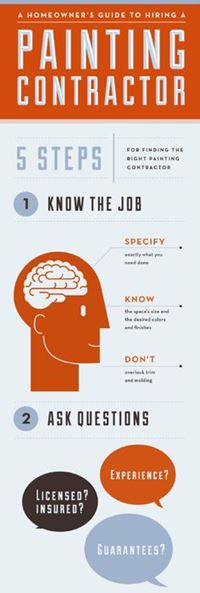Comprehending Seasonal Influences On Commercial Outside Paint: Important Expertise For Success
Comprehending Seasonal Influences On Commercial Outside Paint: Important Expertise For Success
Blog Article
Post Produced By-Burnham Whalen
When you're preparing a business external painting project, seasonal variables can make or break your results. You'll want to take into consideration just how temperature level and humidity effect paint application and drying times. Selecting the ideal period can ensure your paint sticks appropriately and lasts longer. But which periods are genuinely the best for this kind of work? Allow's check out the key elements that can influence your task's success.
The Influence of Temperature Level on Paint Application
When you're planning an industrial outside painting job, the temperature can dramatically influence just how well the paint sticks and dries out.
Ideally, you wish to repaint when temperatures vary between 50 ° F and 85 ° F. If it's also cool, the paint may not treat effectively, resulting in issues like peeling off or fracturing.
On the flip side, if it's as well warm, the paint can dry out too promptly, stopping correct attachment and leading to an unequal finish.
You need to also take into consideration the moment of day; early morning or late afternoon uses cooler temperatures, which can be a lot more desirable.
Always check the manufacturer's recommendations for the particular paint you're utilizing, as they typically offer advice on the optimal temperature variety for ideal outcomes.
Humidity and Its Impact on Drying Times
Temperature isn't the only environmental aspect that influences your industrial external painting job; moisture plays a considerable duty as well. High humidity degrees can decrease drying out times drastically, affecting the total top quality of your paint work.
When the air is saturated with dampness, the paint takes longer to treat, which can bring about problems like poor attachment and a higher threat of mildew development. If Visit Webpage on an especially moist day, be prepared for extensive wait times between coats.
It's critical to keep track of regional weather and strategy as necessary. Ideally, go for Suggested Looking at in between 40% and 70% for ideal drying out.
Keeping these consider mind ensures your job stays on track and delivers a long-term surface.
Best Seasons for Commercial Outside Painting Projects
What's the very best time of year for your industrial outside painting jobs?
Spring and early autumn are usually your best choices. During these seasons, temperatures are light, and moisture levels are typically reduced, producing suitable conditions for paint application and drying out.
Stay clear of summer's intense heat, which can cause paint to dry as well swiftly, bring about inadequate bond and coating. Similarly, just click the following website can hinder appropriate drying out and healing, running the risk of the longevity of your paint job.
Go for days with temperatures in between 50 ° F and 85 ° F for optimum results. Keep in mind to check the neighborhood weather report for rainfall, as damp problems can destroy your job.
Planning around please click the up coming document guarantees your paint project runs efficiently and lasts much longer.
Final thought
In conclusion, intending your commercial outside painting jobs around seasonal factors to consider can make a significant difference in the result. By organizing work during the optimal temperatures and humidity degrees, you'll guarantee much better attachment and drying times. Keep in mind to keep an eye on neighborhood weather report and pick the right time of year-- springtime and early fall are your best choices. Taking these steps will certainly aid you achieve a durable and professional finish that lasts.
